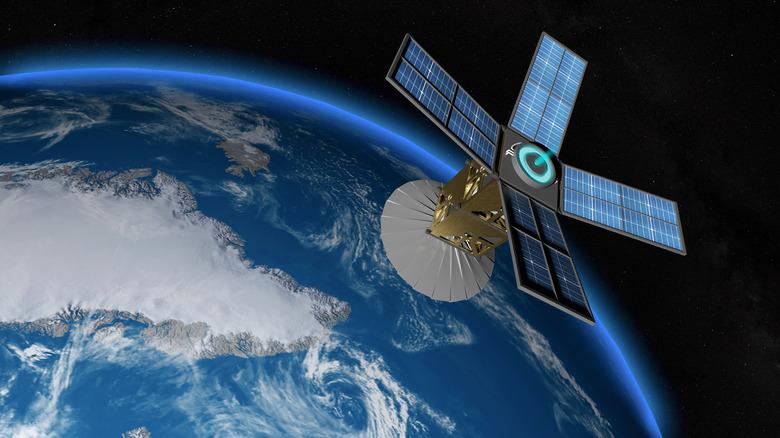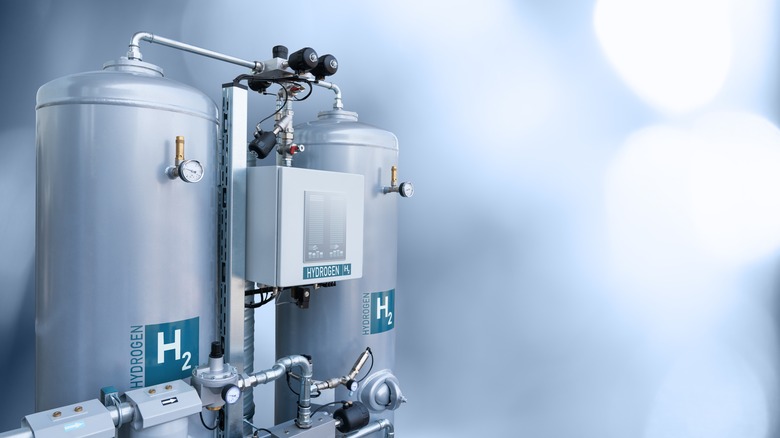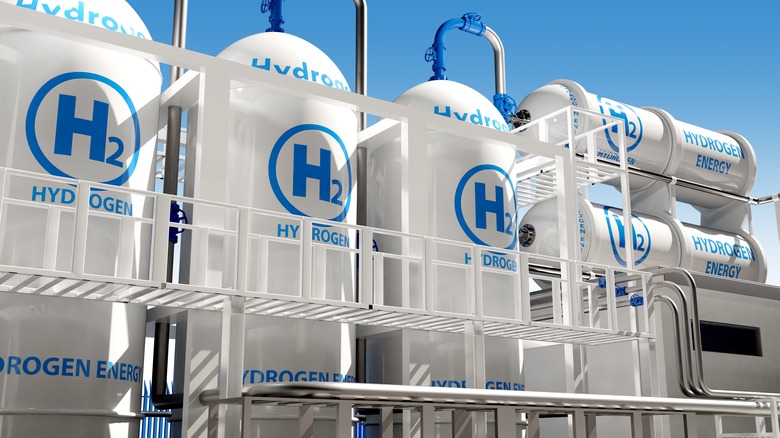
Thibault Renard/Getty Images
One of the major driving forces behind the pursuit of green energy sources in the last few decades has been the relative scarcity of oil around the world. Because it is very gradually becoming more difficult to source oil in environmentally-safe ways, there’s an ever-present fear that one day, we’ll just run out completely, leaving our combustion engines useless. What we need to prepare for this eventuality is a readily-available, environmentally-neutral fuel.
When it comes to readily available sources around the world, one of the most obvious is good old fashioned water. Around 71% of the surface of the Earth is covered in water, whether it be from lakes, rivers, or the ocean. If we could theoretically power our vehicles with water, there would be more than enough fuel to go around for years on end.
The obvious problem here is that water can’t create the spark necessary to power a combustion engine, so if we wanted to use it, we’d need to create a completely new propulsion system. Based on research conducted over the last several decades by NASA, the idea of water-powered propulsion is technically feasible. The real question, though, is whether or not it’s viable.
The science of electrolysis propulsion

Scharfsinn/Shutterstock
A traditional combustion engine utilizes combustible gasoline processed from crude oil to set off a spark plug inside the engine pistons. This, in turn, pumps the pistons and generates energy, which powers your car. Obviously, water is not combustible — if anything, it’s the exact opposite of combustible. So, how could you use water to power a means of propulsion?
In a research paper penned by NASA scientists in 1997, a concept for water-powered movement called electrolysis propulsion was outlined. Basically, you pass an electric current through a water source to separate it into its component molecules, which are then used as propellants. While water could be considered the antithesis of powered propulsion, the actual substance contains two of the most important things you could need for generating power: Hydrogen and oxygen molecules. Hydrogen fuel is one of the most potent out there, and oxygen helps feed heat. If you processed water into a superheated stream, you could create a propelling force without all the hazerdous fumes that come from fossil fuels.
While this concept has been understood for centuries thanks to the works of researchers like Michael Faraday, this paper was the first time it was posited that it could be used in the propulsion of spacefaring equipment like spacecraft and satellites. The science was still deep in the theoretical stage in the 90s, but a few more years later, a genuine effort at realizing electrolysis propulsion was made.
Experimental propulsion systems
In 2021, NASA ran tests on CubeSat satellites equipped with electrolysis propulsion systems. While they were in low orbit, the satellites fed water from a pint-sized tank into the experimental thruster, creating hydrogen and oxygen gas that could move it around in the vacuum of space. This system was supplemented by solar panels, drawing energy from the sun to power the electrolysis process.
The design of these water-powered CubeSats was very promising. Since water, unlike regular fuel, isn’t volatile in its normal state, it’s much safer to transport into space aboard regular shuttles. Once the satellite is deployed, it can create short, yet powerful bursts of movement through the generated oxygen and hydrogen gasses in a rocket nozzle to generate thrust. These bursts were strong enough that only a quick spurt was necessary for movement, which helped to conserve the tank’s reserves.
Perhaps the most attractive aspect of this framework is that it’s much safer to test. Non-professional researchers like college undergrads can work with water without fear of inhaling dangerous fumes or setting off an explosion, which opens new and interesting research avenues.
Could everything use this system?

FOTOGRIN/Shutterstock
So if electrolysis propulsion systems are confirmed to work on satellites, that means they could start powering everything here on Earth, right? Well, not quite. The reason this framework works so well in space is that everything is weightless up there. You only need one quick burst of force to set an object in motion, and another to stop it. Here on Earth, you’d need a constant stream of force to propel a car forward, and considering those CubeSat satellites were only around the size of a shoebox, you’d need exponentially more power and fuel. A full car would burn through its water tank far too quickly to be realistically viable.
Additionally, loose hydrogen is extremely volatile. Again, this is less of a problem in space, because the hydrogen would only be burning in small, quick bursts. If you have burning hydrogen flying out the back of your car for an entire drive along the highway, someone behind you may get hurt.
So no, we can’t use this system to power our Earthly vehicles. Still, if nothing else, it’s more proof positive on the efficacy of hydrogen as a clean fuel source. It just needs to be built into a safe form, like a hydrogen fuel cell, which is the angle multiple major car companies are pursuing.